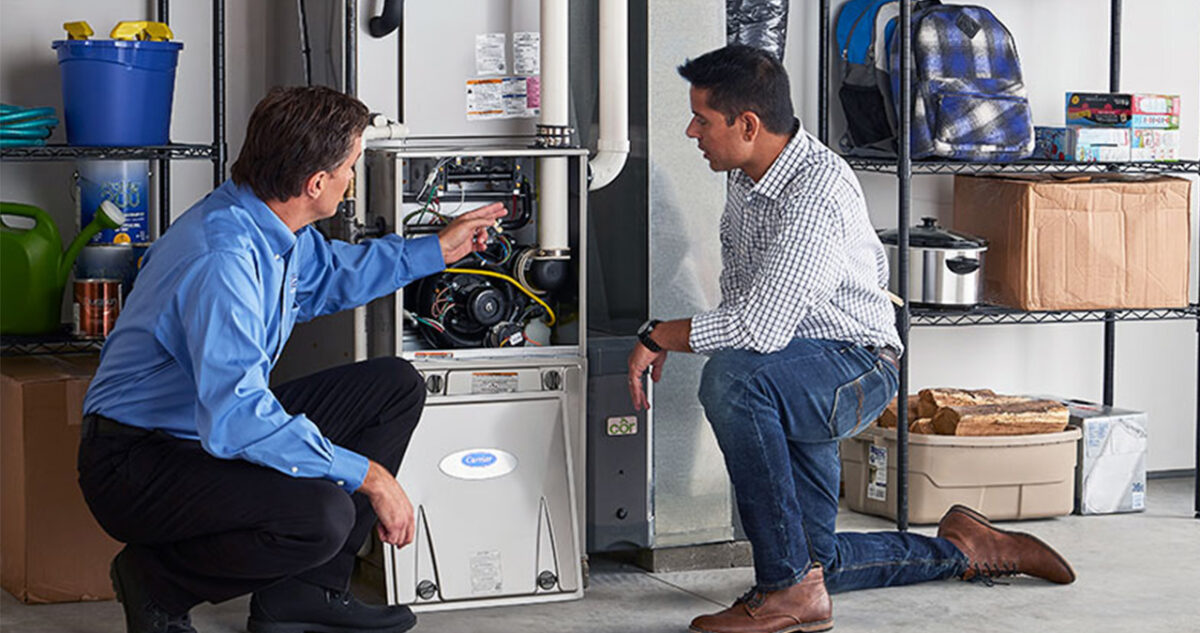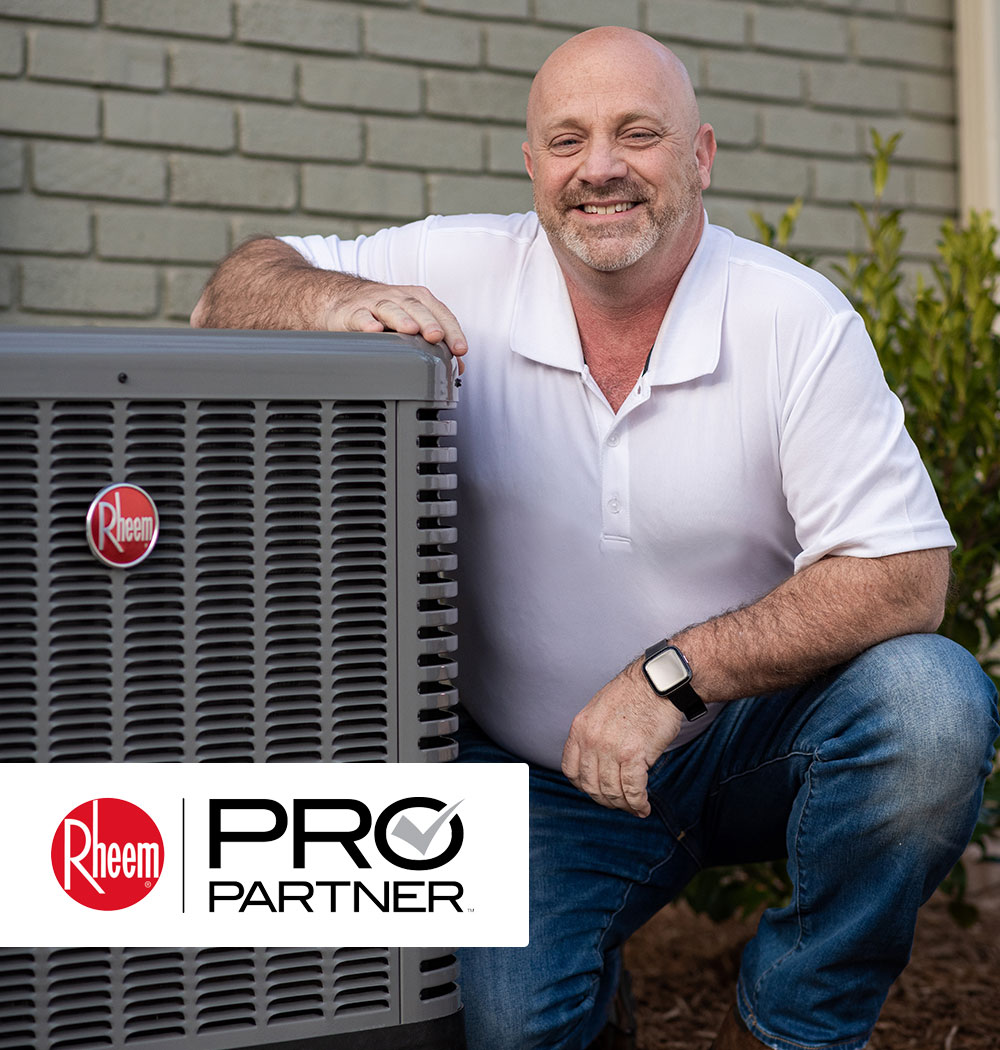
Nothing causes more concern than a furnace breakdown during the peak of winter. Those living in Des Moines know that when the furnace goes out it’s more than just inconvenient, it’s an emergency. Rest assured, Aspen Aire Heating & Cooling is here to give you the tools and tips to identify furnace problems yourself with a step-by-step troubleshooting guide.
Safety First
When handling any HVAC equipment, safety has to be your top priority. Before any inspection, turn off the power to your furnace at the breaker box. Never handle electrical components unless you’re a qualified professional. While inspecting your furnace, stay alert for signs of gas leaks (like a rotten egg smell) or carbon monoxide dangers. If you start smelling gas or your CO detector sounds, exit your home immediately and contact emergency services.
Furnace Troubleshooting Steps
Check the Thermostat
First things first, we recommend checking your thermostat before moving on to any other piece of hardware. When inspecting your thermostat follow the steps below:
- Is the thermostat set to heat? – Make sure to set your thermostat to “heat.” Any other temperature setting will most likely prevent your furnace from turning on entirely. Additionally, you’ll want to set the temperature higher than the current room temperature. Any temp below will stop the furnace from kicking on.
- Are the batteries good? – Most thermostats, even smart ones that connect to your WiFi, use batteries. If you’re unsure if your thermostat uses batteries, look for a compartment or a low battery indicator on the thermostat.
- Is the thermostat screen blank or displaying an error code? – Don’t panic! Error codes can seem intimidating, but they’re designed to help you troubleshoot. Go ahead and write down the error code and consult your thermostat’s manual. While doing so check to see if the thermostat is receiving power by checking the circuit breaker. If you’ve checked these things and you’re still unsure or uncomfortable troubleshooting, it’s time to call an HVAC technician.
Check the Air Filter
The air filter is one of the most overlooked parts of furnace maintenance. For reference, The Zebra states that 29% of people don’t change the air filter in their home at all. Now this is concerning for a couple of different reasons. Eventually clogged, and debris-packed air filters can stop your furnace from working by restricting airflow to the intakes. Over time those blocked intakes can reduce efficiency, cause overheating, damage the heat exchanger and start short cycling.
Where Is My Air Filter?
Most air filters will be in a special compartment attached to your furnace. However, the location may be different based on the HVAC system’s brand and model. If you’re having trouble finding the filter, check your owner’s manual for a complete breakdown. It’s also important to remember to change your air filter regularly. We recommend changing it every 90 days. For more in depth information we’ve put together a guide on how often you should change your furnace filter.
Make Sure the Furnace Switch Is On
Okay, the next part may seem like a no-brainer, but make sure the furnace switch is in the “on” position. Most of the time the furnace switch is either on or near the furnace itself and typically looks like a normal light switch. If it’s already in the right position, simply turn it off and on again to see if it fixes the problem. If the furnace is not starting it may be time to check the circuit breaker.
Check the Circuit Breaker
When it comes time to check the circuit breaker, always prioritize safety. If you’re ever uncomfortable, call a professional. For troubleshooting we recommend the following steps:
- Locate the main electrical panel and turn off the main power.
- Identify the furnace breaker.
- Look for labels like “furnace,” “Heater,” “HVAC.”
- Look for a tripped breaker.
- Keep an eye out for scorch marks, burning smells, and breakers that are unusually warm.
- Reset the Breaker (if tripped).
If the breaker immediately trips again, do not turn it back on, instead call a qualified electrician to inspect the panel and electrical system. If the breaker stays on and the furnace still doesn’t work it may be time to check on the gas supply.
Check the Gas Supply
As always safety first! Dealing with gas lines can be dangerous without the proper safety and knowledge. The same goes as before, if you’re unsure about anything or uncomfortable working with gas, call a professional.
- Locate the gas valve
- Check the valve position
- Main gas valve: make sure the handle on the main gas valve is parallel to the gas pipe. This means the pipe is open.
- Furnace gas valve: Check that the furnace’s gas valve is also open.
- Visual inspection
- Look for damage: inspect the gas lines leading to your furnace for any signs of damage, kinks, or corrosion.
It is crucial to remember, do not attempt repairs yourself. If you suspect a problem at any point, contact your gas company or a qualified HVAC technician who specializes in furnace repairs in Des Moines to inspect any gas-related problems.
When to Call an HVAC Company
- Gas leaks or unusual smells
- Complex electrical issues
- Water leaks or unusual noises
- Lack of confidence in DIY troubleshooting
- Persistent problems despite troubleshooting efforts
We understand that a malfunctioning furnace can be stressful, especially during cold weather. So, if you’re experiencing ongoing furnace issues or feel uncomfortable doing maintenance yourself, don’t hesitate to contact Aspen Aire Heating & Cooling.


